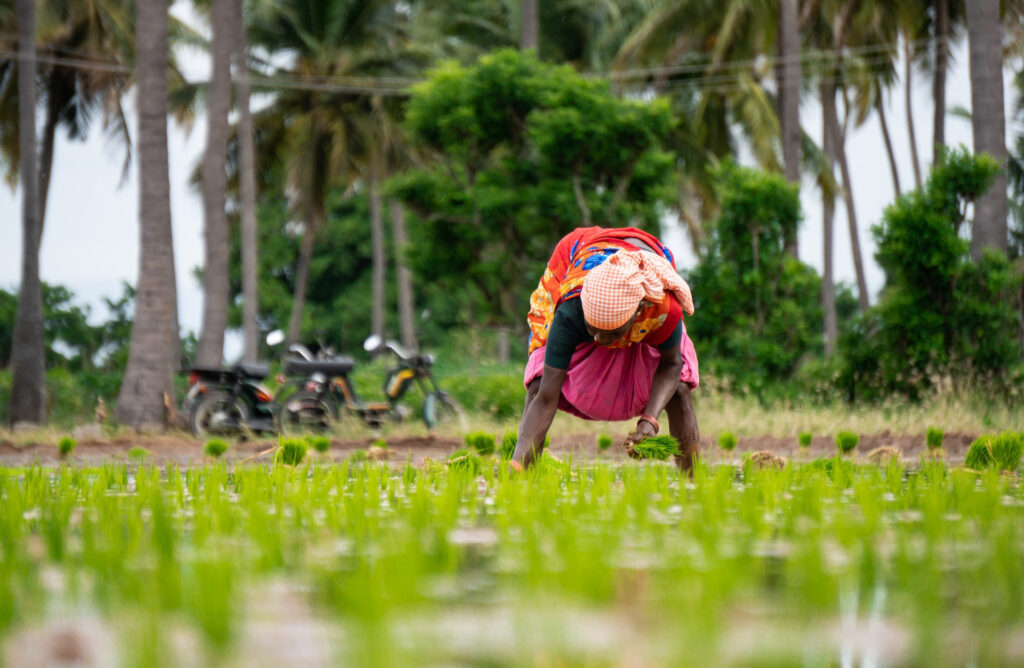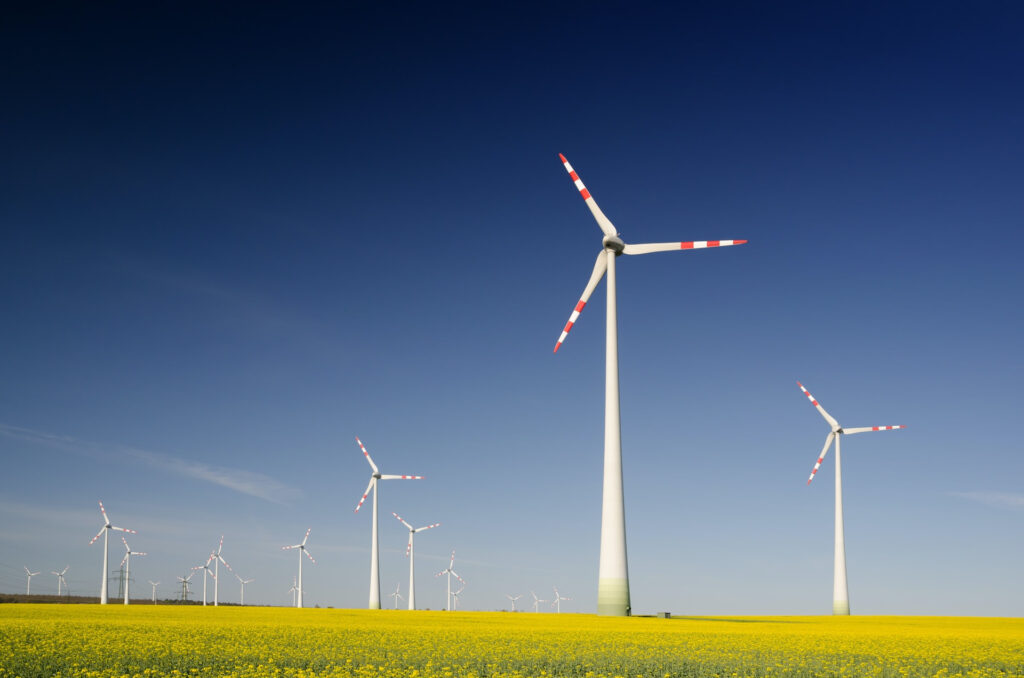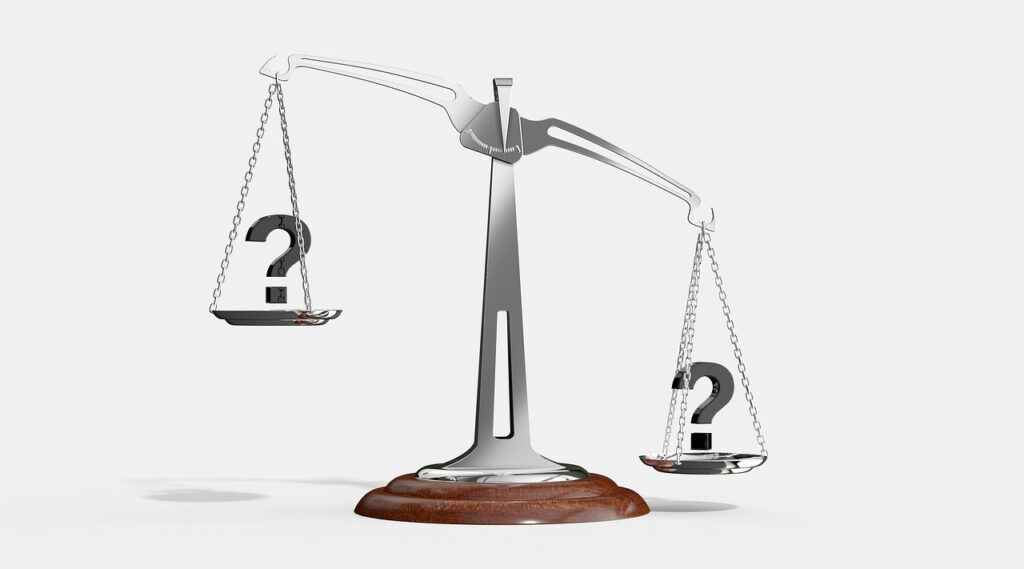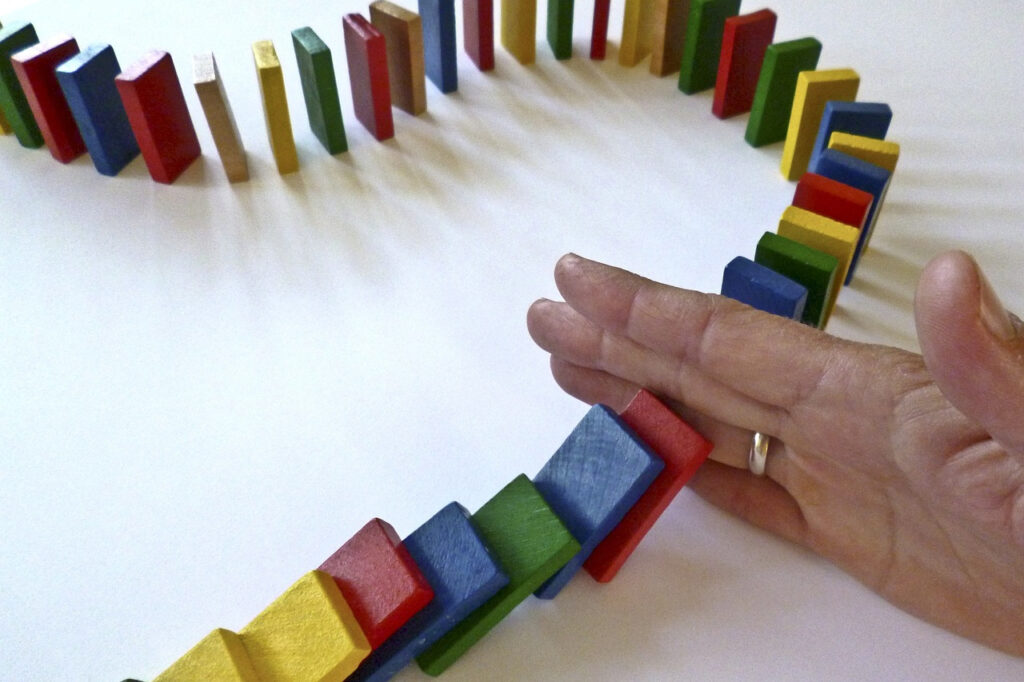WHAT IS YOUR OPINION? Let us know in the comment section below.
The environment does not have a crisis. It has developed a sustainable system over millions of years. It will stay alive for ever after it has got rid of humans. It is us as humans that have a crisis –we have a threatening problem on our doorstep.
The question is: “To develop or not to develop”. The issue at hand is whether technological development and economic policies can succeed in overcoming the resource and energy shortage on Earth or should we revert to dependence on the basic unaltered ecosystem services that nature provides? Perhaps we “should do the one and not neglect the other”. But what should the balance be?

Photo: Is it possible for us to become part of nature’s sustainable system.
What is clear is that there is no clear-cut simplistic answer to the immensely problematic situation that we find ourselves in; or rather the set of overwhelming problems, facing humankind.
The fundamental reason for the crisis is due to humanity who is extracting more resources than what can be replenished by means of recycling and the ecosystem services of the Earth; and degrading the productive quality of that what is left by inappropriate means of development.
The one generic overarching statement concerning a solution is:
People must return, or adapt in a sensible way, to a lifestyle in accordance with the Earth’s resource capability; be it through simplistic living and/or sensible technology based on the concept of biomimicry (imitating Nature).
Stated in similar terms: Supply must equal demand. The need for supply is currently not uniformly spread over the earth. There are areas of massive wealth and over production (over supply) vs billions living in poverty and hunger (huge demand).



Photos: We live in a world marked by huge inequalities.
Due to the complexity of Nature, as well as that of the human communities, there can hardly be a single global “shotgun” solution, targeting everything, and all places, and all communities, in the same manner, and at the same time.[1] There is thus no simplistic way to approach the solution because society, such as that of South Africa, is grouped into vastly heterogenic groups; each requiring a particular approach to become sustainable. At the risk of over-simplification one can identify the groups as: 1) The urbanized wealthy; representing the intellectual/commercial active/industrial component of society; 2) the urban poor – the working class consisting of a large proportion of jobless people, and 3) the rural communities – mostly subsistence farmers. The first group, the urban sector, is in a dominant position, and in the process, is misusing and polluting the environment excessively in the name of “development” which in reality means luxury living. Secondly, the urban poor constitutes a non-productive sector; often engaging (of necessity) in a destructive, even unlawful, ways of making a living. Lastly, the rural community is often devastating the soil, vegetation, and animal component of the ecosystems in their desperate drive eking out a living. Each group has its own niche and specific role to play in solving the crisis. This makes the groping towards a solution highly problematic.

Photo: any change has a ripple effect on its surroundings
To grasp the essence of the crisis and its solution one needs to see it against the background of Nature’s Laws. The understanding of the Thermodynamic law and that of Conservation of matter, is vital to attaining sustainable living. Matter and energy cannot be created nor destroyed – it only loses quality as it changes from one form to another. Matter cannot be increased although it could to a certain degree be reused (through recycling). This is not the case with energy.
But in our quest to find solutions to sustainability we also need to be cognisant of the limiting factors and trigger factors present in Natural systems.
According to the law of Limiting factors, substances of resources act in combination with each other and cannot have the desired effect if only a single ingredient is unilaterally increased. If a shortage of a specific nutrient (e.g.Fe), that inhibits growth occurs, and this nutrient is supplemented, the resultant growth will simply soon be limited by another factor (such as Mg, or Ca).
Trigger factors presupposes that any change will have a ripple effect. It illustrates the concept that Nature is a dynamic system and that any action will always elicit a reciprocal (sometimes unintended) action. As everything is attached to everything else, there will either be a positive or negative feedback when action is elicited. This is in accordance with the concept of Chaos Theory where it is almost always impossible to see the outcome beforehand with accuracy.
What will the implications if these principles be for effective human use of the land?
Not every type of matter is necessarily a resource. Resources are matter and energy that humans need. Thus, Zimmerman (n.d) stated: “resources aren’t, they become”. A pen for example, is a form of matter but is a resource only to people who are able to write. Coal is not a resource until we need heat. We can thus say resources consist of matter and energy that humans have a need for.
As stated above, the crisis at hand is that there is a degradation of resources as well as a shortage of usable matter and energy, and subsequently not enough food and other necessities of life for sustainable living of the global population. Provision of these, are subjected to other Laws. How can we resolve Nature’s (or as already better said: Peoples’) crisis?
The essence is: Nature in its undisturbed condition has no crisis! If humans could have lived according to Nature’s directives, they also would have had no production crisis. Everything is, however, not (yet) lost. We need a re-instating of the balance between supply and demand; a balance between humans’ needs (resources) and nature’s provision (supply). This is the “uneasy equation “. (Tivy, J. 1990).
THE UNEASY EQUATION
S = E + R
(Human) Survival equals Energy plus (natural) Resources
The long-term survival of humankind on Earth hinges on the balance between human needs and nature’s ability to provide (energy and resources). We need to produce enough food (and essential goods and services) for the current population, by means of enviro-friendly energy, and at the same time retain enough resources to ensure that future generations can continue to reap the same benefits.
In this regard we are compelled to confront a complicated two-pronged dilemma, namely: a supply:demand problem.
To ensure resource (food, etc) security for all in the future, we must




Photos: Sustainable agriculture and preventing overharvesting
Photos: Clean energy and the Circular economy
There is thus a reciprocal relationship between supply and demand.
SUPPLY ——- DEMAND
Supply creates demand, and demand necessitates (requires) supply.
Demand is the expressed need for matter and energy which can be changed into a resource (i.e. usable matter/energy) for people. Supply is the natural resources (matter and the energy), that can provide for this demand. Matter and energy must be supplied to humans to satisfy their demand/needs/requirements. But, supply and demand must be balanced to ensure that a sustainable stable situation exists. How do we balance these variables in our quest for sustainable living? In the economy, supply of a (good) product elicits a demand, and thus creates a market for the resource. On the other hand, demand also creates supply. If there is a need (demand), someone will identify it and supply this demand. “Necessity is the mother of invention”.
There is thus a reciprocal relationship between supply and demand. Supply creates demand, and demand necessitates (requires) supply.
The effective provision of Resources for people (i.e. satisfying the need as expressed as the demand factor) is attained by a balance between supply of Matter (food and material), and Energy to extract it (make it available). It can, albeit simplistically, expressed in the qualitative equation: (see equation to the rght)
where R (resource, or alternatively said, the needs/demand of people) is satisfied by supply of M (useful matter); plus E (energy) to extract it.
The problem is that, in accordance with the principle of Limiting factors, we cannot increase any one side of the formula and expect to get overall positive results. We cannot infuse massive energy (E) and get unlimited sustainable production (R). The principle of Limiting factors (Liebig’s law of the Minimum, Hugo & Hugo, 2023, par. 3.1.3) that was mentioned, shows that where a limiting factor exists, for example the absence of a specific plant nutrient which inhibits growth, and this nutrient is supplemented, the added growth will simply be limited by another factor. Unlimited growth is however impossible because by continually adding what is deficient cannot result in growth to an unlimited degree.

Photo: Providing more limiting elements however cannot carry on forever as the availability of matter remains limited
A pumpkin can only reach a limited maximum size, irrespective of how much fertilizers are added. What is true for a pumpkin is true in terms of global sustainability. It would apply to all organisms and environmental factors. Growth cannot continue unabated – despite what we put in. There is thus a limited potential in growth that cannot be exceeded, and production cannot forever increase by adding requirements for growth (water, fertilisers, etc.). In the same way, in our striving towards development through input of energy, there will always be a resource factor that inhibits further development that we will have to overcome. This process of adding limiting elements however cannot carry on forever as matter is limited. All production or development will eventually peak.
Thus, to satisfy the demand/need for Resources (R), the ratio between availability of Matter(M) and Energy (E) must be in balance. Theoretically this means the magnitude of the ratio between the two should be equal, or numerically (qualitatively) speaking, 1: 1. The increase of production in quest for sustainability (i.e. the satisfying of the need for resources) will not be attained by the unilateral increase of either one of these two factors – matter or energy. But it is dependent on the balance between Matter and Energy. Sustainability (i.e., the long term satisfied expressed demand for resources) can thus (theoretically and in quasi arithmetical manner) be formulated as (see equation to the right)
Satisfied (sustainable) Resources = balanced availability of
(usable) Matter and
(suitable appropriate)Energy
[1]Not to be assessed from a mathematical perspective

Photo: The huge stretches of landfill sites is an example of an oversupply of waste where energy and materials are lost.
Due to the principle of Limiting factors referred to above, an over-supply of energy will not have an equally large positive effect on satisfying the expressed resource requirements (demand side) of the equation (R). Over supply of only one, or the other, will not have a positive effect on satisfying shortage in demand to the same extent. There need be just enough energy generation to supply for the extraction of available resources; else the equation will be lacking perfect balance (or in other words be ‘unsustainable). To increase Energy availability unilaterally without also an equivalent increase of the Resource base will thus not lead to an increase in satisfying of Demand (as expressed need for resources). Neither can the independent raising of available matter (resources) without equal increase in available energy, be of value for ensuring sustainability/satisfying the demand.
If the ratio is to be 2:1, (R=2M+1E), it will imply that there are more resources available than the amount of energy to make it available for use. Alternatively stated, there will not be enough energy to extract the demand (need) for resources. For example, the energy available to desalinate seawater (available abundantly) for a specific settlement may be too small to supply in the demand. There will then be resource availability that cannot be used. Visa versa a ratio of 1:2 (R=1M+2E), will imply that there is unnecessary energy produced for developing the available resource demand. Without a balanced amount of energy, the resources will lie dormant and have no use. For example, if an over-supply of coal is burnt to supply an excess of energy for a small village that is not able to effectively utilise all of it, a wastage of unused coal resources will be the result. Should we thus strive to enhance our survival strategy (raising the quality of life; provide enough food for all people, satisfy the demand), we need to develop the availability of resources (increase M), as well as energy (E), in a balanced way, taking into account the Laws of Thermodynamics and Matter.
If we want to progress from a temporary Resource (R) survival mode (expressed as R=M+E)to a permanent sustainable demand (expressed as Rs) strategy, the equation becomes more than just “uneasy”. It is very complicated. Is the attaining of such a strategy possible? Can a world with limited resources sustain development for ever?
At the risk of interrupting the unfolding of the argument, we are reminded of Einstein’s formula. To assess the problem and try to resolve the equation, one needs to reflect on the fact that resources (matter) and energy, operate according to Einstein’s formula.
Energy and mass are thus actually the same thing, albeit in different forms. We can e.g., release energy by burning wood, or by splitting an atom. Consolidating energy into matter happens in the process of photosynthesis. When we eat, and the food (chemical energy) is oxidised and heat produced, and the rest transformed into body mass. Adding fertilizer to crops, or ploughing, also transfer the inherent energy to mass (crop yield). We are bound to Nature’s Laws.
Where E = energy
m = the mass of the matter involved
c = the speed of light

As mentioned, the essential issue of solving the environmental crisis (enough food, essential goods, services, production) hinge on two variables: first the energy to extract matter and transform it into resources and secondly the available matter. Further analysis of this is required if we want to implement our above-mentioned sustainable formula: that is when R must become Rs – that is sustainable resources.
Rs = sustainable resources;
M = matter + E = energy.
We need to satisfy M and E in the formula above.
Considering E (ENERGY), the E variable in the equation
Rs = M+E
Because all activity is based on the 1st Thermodynamic Law that postulates that energy cannot be created nor destroyed, the equation is “uneasy”; and the 2nd Law states that energy cannot be re-used due to degradation of the quality of energy; the entropy factor. The application of these laws to our demand (survival) equation (Rs) is that we have only a limited supply of energy available on Earth, and once used, it cannot be re-used. Because all activity is based on consumption of energy. Our resource production capacity is thus limited. The “uneasy” element is the question to what extent can we muster additional clean, cost-effective energy (e.g. geothermal, hydrogen, solar, wind etc.) for the needs of the future population?
Matter becomes resources when humans recognize a use for it. According to the 1st Thermodynamic Law, matter, like energy, cannot be created nor destroyed. The implication for the formula for sustainable survival (effective resource demand) is thus that we do not only have limited energy available, but also have limited resources for our ever-growing population’s unrealistic expectations for an ever-increasing standard of (luxury) living. We are thus confined to our one-and-only Earth that we can use; i.e. the “space ship” concept. In the equation, we must optimize people’s resource needs with existing matter and energy resources. Needs will have to become realistically in line with availability of limited resources. It becomes a supply:demand equation.
We thus have ultimate limitation of energy and matter to our disposal. Matter cannot be added to the earth system. We may argue that unlimited geo-energy might become available but according to the Law of Limiting factors we cannot increase R (resources or quality of life) unilaterally by merely increase E (energy) as we are limited also by M (matter).
To complicate matters, this equation must be a sustainable formula. Sustainability means that we need to make enough resources (food and essential goods and services) available for the current population by means of energy input and yet retain enough resources of good quality to ensure that future generations can continue to reap the same benefits.

Photo: When once high-yielding mineral deposits get depleted, more and more energy is required to deliver the same amount of useful minerals.
where sustainable demand (Rs) is dependent on supply via
Providing a solution for demand (survival) is indeed an uneasy equation. If we project demand to long term sustainability, the solution to the equation becomes extremely complicated. As a theoretical (qualitative) solution we may postulate: (see equation on the left)
At the risk of repetition, for the sake of clarity, we can postulate that for survival the ideal resource level (Rs) composition depends on the balanced ratio between availability of (usable) Matter (M) and (environmentally friendly) Energy (E). To sustainably increase quality of life (as expressed by Rs), we need an increase of energy (E ) to enhance the extraction of matter (M); but the amount of matter that can eventually be extracted is limited. Development (of resources (R) is thus ipso facto limited. Due to the Law of Limiting factors it is of no use if we double energy (2E) but do not have enough usable matter (resources 1M); neither can we multiply energy (E) to raise lifestyle (R) if matter (M) is limited. According to the principle of Trigger factors, increasing of (E), e.g. by adding fertilizers to a crop, might have an ununforseen complicated outcome (Chaos Theory- Hugo & Hugo, 2023, par. 2.2.1.1.2) due to proliferation of weeds and negative influence on the crop.
Summarizing thus: Matter (resources) and Energy must be seen as complementary (as shown by the Einstein formula) and for sustainability must be developed in the right relationship (balance) to each other: numerically speaking, in a balanced ratio of 1:1. Unlimited Energy as well as unlimited Matter would have given unlimited R (resource supply), and perfect sustainability. But that is impossible due to the Thermodynamic Laws. We are (ultimately) stuck! We cannot escape from the Laws of Nature! Unlimited Energy will lead to exhausting of Matter/Resources and distort the equation. It is however true that by increasing E (without damaging the environment, i.e. use of clean energy) we can stretch the lifespan of resources by recycling, and also increase the mass of available matter tremendously and turn it into resources e.g. by changing sea water into fresh water and irrigate large tracks of dryland.

Nature however functions in a Holocenotic way (everything is attached to everything else) and change in one element has a Trigger effect – e.g. additional water will affect the total ecology i.e. the soil, and the vegetation, and the animal life, and eventually the whole social and economic construct of the environment. Much can thus be done to increase production, but care is to be taken. To make massive amounts of compost from crop residues; solve the pollution problem with technology (e.g. electric or hydrogen driven cars); and a huge number of alternatives is currently in the making.
Sustainable development is a contradiction in terms. It is not possible. To what extent sustainable living is possible, is a relevant question, the answer to which is not clear. What complicate matters is (as has been pointed out) that demand varies tremendously on a global level. It varies remarkedly between rich (ultra-luxury) and poor (deprived and hunger). If we want to raise availability of resources globally, we will need to equalize demand more equitably and extend the availability of resources (M) as well as energy (E). To uplift the standard of living of the massively poor untrained, uneducated rural component (and ensure jobs and food security for all in the future – the Rs factor) will require improving the productive capacity of the rural resource base(regenerative agriculture, education, etc.) of our human and natural resource base (and safely remove all forms of waste),and muster enough clean energy. For this, we need capital and a fundamental change of heart by humanity to accept simplistic living.
Ghandhi’s words apply:
“The earth has enough resources for people’s needs, but not for their greed”
Whilst acknowledging the indispensable role of capital for sensible productive development of resource delivery, the excessive luxury lifestyle of the superfluous rich will have to be curtailed and deposited back into the ecological system to create a productive sustainable economy. An economy where harmony between utilization and re-investment in natural capital (our resource base) is upheld.
Standard of living can be measured according to your income and material possessions. Quality of life is measured according to your relationships – with God, fellow Human beings, and by the quality of the Environment in which you live. Striving for a higher standard of living leads to a decrease in the quality of life; a high quality of life makes a high standard of living irrelevant.
“We need to live more simply, so that others can simply live.”
Mother Teresa